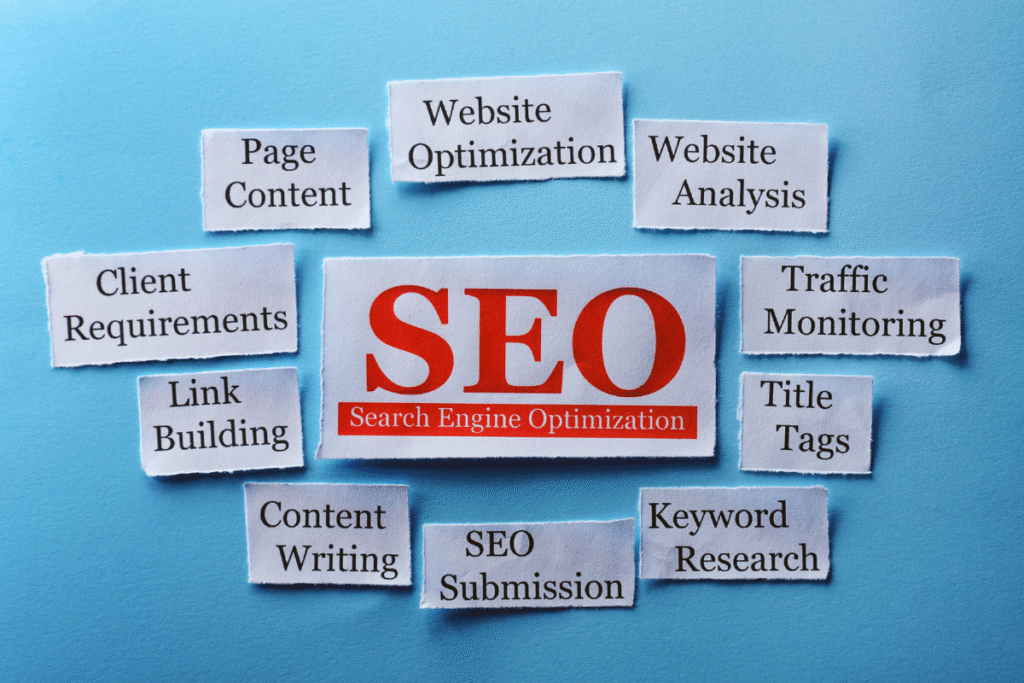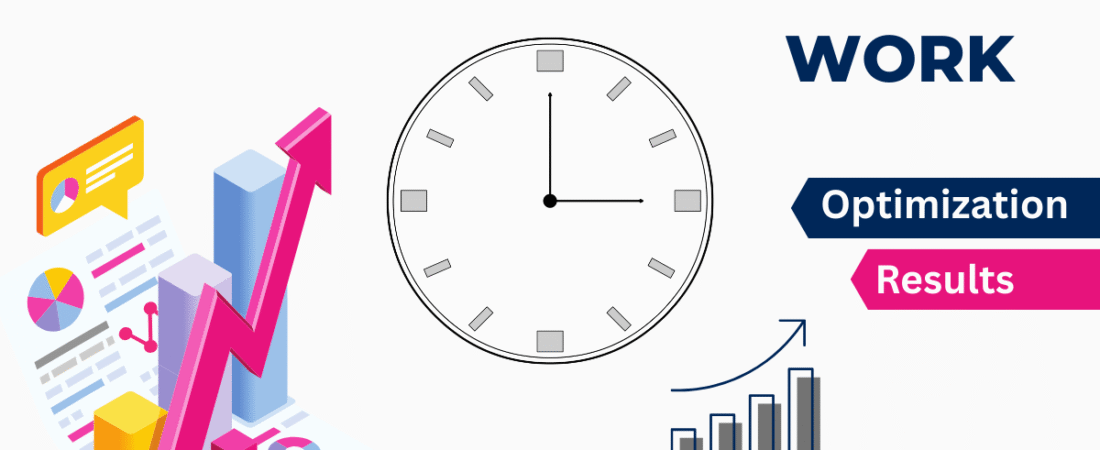Search Engine Optimization, often called SEO, is the process of improving your website so it can rank higher on search engines like Google. It helps your business become more visible online, attract the right audience, and generate more organic traffic without relying only on paid ads.
One of the most common questions people ask is, “How long does SEO take to see results?” The answer is not always simple because SEO depends on many factors, from your industry competition to the quality of your website content. What is important to understand is that SEO is a long-term strategy and not something that works overnight.
In this blog, we will explain why SEO takes time, what factors affect the SEO results timeline, what a typical SEO growth timeline looks like, and what you can do to speed up the process.
Why SEO Takes Time?
SEO does not deliver instant results. Most websites notice small rankings and traffic improvements after about 3 to 6 months. To see the full impact, it often takes 6 to 12 months or more, especially if you are starting fresh or competing in a crowded industry.

The speed of your progress depends on several factors, including how established your website is, the quality of your content, the level of competition in your niche, and how consistent your SEO strategy is over time.
Factors that influence SEO timelines:
- Website Age and Authority: Older sites with established authority often rank faster, while new websites can take closer to a year.
- Industry Competition: Competitive niches like finance, health, or travel require more time and resources than smaller or local markets.
- Content Quality and Frequency: Publishing high-quality, optimized content on a consistent basis helps speed up results.
- Technical SEO Health: Factors like site speed, mobile optimization, and crawlability impact how quickly search engines can rank your site.
- Backlink Profile: Building strong, relevant backlinks takes time but is essential for long-term authority.
What to expect over time:
- 3–6 months: Early improvements in keyword rankings and traffic.
- 6–12 months: Noticeable growth and stronger visibility.
- 12+ months: Established authority and sustainable long-term results.
Key Factors That Influence SEO Timelines
The time it takes to see SEO results is different for every website. Several factors play a role in how quickly or slowly your site moves up in search rankings. Here are the most important ones.

a. Website Age and Domain Authority
Older websites often have an advantage because they already have a history with search engines. A site that has been active for years with consistent updates can gain results faster. On the other hand, new websites usually take longer because they need time to build trust and credibility.
b. Competition in Your Industry
If your business is in a niche with little competition, you can expect to see results sooner. Ranking for less competitive keywords is often faster. In highly competitive industries like finance, health, or e-commerce, it can take many months or even years to achieve strong rankings.
c. Content Quality and Frequency
Search engines reward websites that consistently publish valuable content. Fresh, relevant, and well-optimized articles give your site more chances to rank. Regular updates and keyword research help you stay ahead of competitors.
d. Backlinks and Authority Building
Backlinks are like votes of confidence from other websites. High-quality backlinks from trusted sites can improve your authority and speed up results. Building them takes time and consistent effort, but they are one of the most powerful signals for long-term growth.
e. Technical SEO and User Experience
A strong technical foundation helps search engines crawl and understand your site. Factors like site speed, mobile optimization, and structured data matter a lot. If your website has technical issues, it can delay progress even if your content is good.
Typical SEO Timelines: What to Expect
Every website’s journey is different, but most businesses follow a similar SEO timeline. Knowing what to expect can help you stay patient and focused.

Months 1 to 3
This stage is about preparation. It usually includes SEO audits, keyword research, technical fixes, and setting up tools for tracking progress. During this time, you will not see many changes in rankings or traffic because the foundation is still being built.
Months 3 to 6
At this stage, the focus shifts to creating content and building backlinks. You may notice some movement in rankings, but results can go up and down as Google tests your site. Small increases in traffic and visibility often begin here.
Months 6 to 12
This is when you start seeing clearer improvements. Your website may begin ranking for more keywords, organic traffic usually increases, and you might start noticing better conversions. SEO efforts start to compound during this period.
After 12 months
Websites that continue with consistent SEO work usually see the strongest results. By this time, your site may have higher authority, more stable rankings, and steady organic traffic. This stage brings long-term ROI as your presence in search engines becomes stronger.
How to Speed Up SEO Results
- Focus on quality over quantity. Publish well-researched content and earn strong backlinks rather than producing lots of low-value pages.
- Target long-tail and low-competition keywords first. These specific phrases often bring faster results.
- Ensure your website has a strong technical foundation. Check that it loads quickly, works well on mobile, and has no major errors.
- Use tools like Google Search Console and Google Analytics to monitor your SEO progress and see what works.
- Be consistent with your efforts. Regular updates and steady SEO work help build long-term growth.
- Avoid shortcuts and black-hat tactics. Quick tricks can harm your rankings and slow your progress in the long run.
Common Misconceptions About SEO Timelines
Many people have wrong ideas about how SEO works. One common myth is that SEO delivers overnight results. In reality, it takes months of consistent work to see meaningful changes.
Another misconception is that once your website ranks, it will stay there forever. Search engines constantly update their algorithms, and your competitors are also improving, so you need ongoing effort to maintain rankings.
Some people believe that paid ads can replace SEO. Paid ads can bring traffic quickly, but they do not improve your website’s authority or organic rankings. SEO and paid ads serve different purposes and work best together for long-term success.
Conclusion
SEO is a long-term investment that requires patience and consistent effort. Most websites start seeing meaningful results within six to twelve months, but the exact timeline depends on factors like competition, content quality, and website authority. It is important to have realistic expectations and stay committed to your SEO strategy.
By focusing on quality content, technical optimization, and building authority over time, you can achieve lasting growth. For businesses looking for faster or more tailored results, consulting an SEO expert or agency can provide guidance and help create a personalized plan.
FAQs
What is the 80/20 rule for SEO?
The 80/20 rule means that 80 percent of your SEO results often come from 20 percent of your efforts. Focus on high-impact actions like targeting the right keywords, optimizing your best content, and building quality backlinks to get the most results.
How to tell if SEO is working?
You can measure SEO success by tracking metrics like organic traffic, keyword rankings, backlinks, and conversions. Tools like Google Analytics and Google Search Console make it easy to monitor progress over time.
Is SEO still worth it in 2025?
Yes, SEO is still very valuable. Organic search drives long-term traffic, builds credibility, and offers a higher return on investment compared to paid ads. Staying consistent and following best practices ensures your site remains visible.
How to quickly improve SEO?
Focus on optimizing technical SEO, targeting long-tail keywords, creating high-quality content, and building relevant backlinks. Consistency and monitoring your progress are key to faster improvements.
What are backlinks for SEO?
Backlinks are links from other websites to your site. They act as votes of confidence, showing search engines that your content is valuable and trustworthy, which can improve rankings.
What is white hat SEO?
White hat SEO refers to ethical strategies that follow search engine guidelines. It includes creating quality content, improving user experience, and building legitimate backlinks, leading to long-term sustainable results.
How long does it usually take to see SEO results?
Most websites start noticing small improvements in three to six months. Significant growth typically appears in six to twelve months, while long-term results and authority can take a year or more.
Can paid ads replace SEO?
No. Paid ads can bring immediate traffic, but they do not improve your website’s authority or organic rankings. SEO and paid ads work best together for sustained growth.
{ “@context”: “https://schema.org”, “@type”: “FAQPage”, “mainEntity”: [ { “@type”: “Question”, “name”: “What is the 80/20 rule for SEO?”, “acceptedAnswer”: { “@type”: “Answer”, “text”: “The 80/20 rule means that 80 percent of your SEO results often come from 20 percent of your efforts. Focus on high-impact actions like targeting the right keywords, optimizing your best content, and building quality backlinks to get the most results.” } }, { “@type”: “Question”, “name”: “How to tell if SEO is working?”, “acceptedAnswer”: { “@type”: “Answer”, “text”: “You can measure SEO success by tracking metrics like organic traffic, keyword rankings, backlinks, and conversions. Tools like Google Analytics and Google Search Console make it easy to monitor progress over time.” } }, { “@type”: “Question”, “name”: “Is SEO still worth it in 2025?”, “acceptedAnswer”: { “@type”: “Answer”, “text”: “Yes, SEO is still very valuable. Organic search drives long-term traffic, builds credibility, and offers a higher return on investment compared to paid ads. Staying consistent and following best practices ensures your site remains visible.” } }, { “@type”: “Question”, “name”: “How to quickly improve SEO?”, “acceptedAnswer”: { “@type”: “Answer”, “text”: “Focus on optimizing technical SEO, targeting long-tail keywords, creating high-quality content, and building relevant backlinks. Consistency and monitoring your progress are key to faster improvements.” } }, { “@type”: “Question”, “name”: “What are backlinks for SEO?”, “acceptedAnswer”: { “@type”: “Answer”, “text”: “Backlinks are links from other websites to your site. They act as votes of confidence, showing search engines that your content is valuable and trustworthy, which can improve rankings.” } }, { “@type”: “Question”, “name”: “What is white hat SEO?”, “acceptedAnswer”: { “@type”: “Answer”, “text”: “White hat SEO refers to ethical strategies that follow search engine guidelines. It includes creating quality content, improving user experience, and building legitimate backlinks, leading to long-term sustainable results.” } }, { “@type”: “Question”, “name”: “How long does it usually take to see SEO results?”, “acceptedAnswer”: { “@type”: “Answer”, “text”: “Most websites start noticing small improvements in three to six months. Significant growth typically appears in six to twelve months, while long-term results and authority can take a year or more.” } }, { “@type”: “Question”, “name”: “Can paid ads replace SEO?”, “acceptedAnswer”: { “@type”: “Answer”, “text”: “No. Paid ads can bring immediate traffic, but they do not improve your website’s authority or organic rankings. SEO and paid ads work best together for sustained growth.” } } ] }